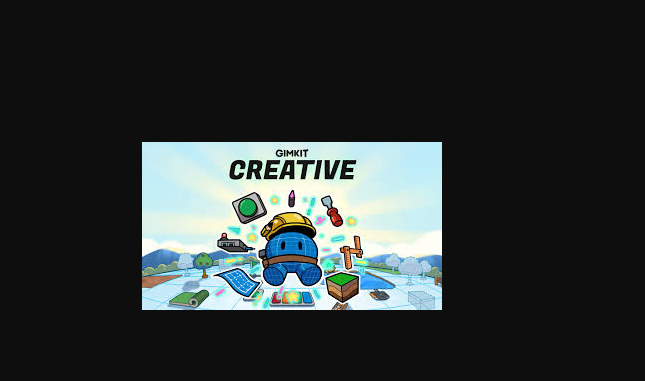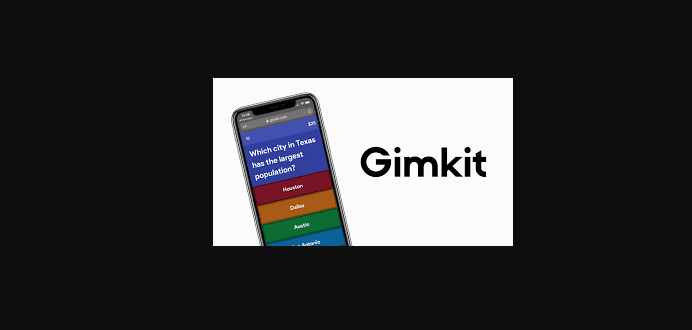Hosting a gimkit host session can feel, at first, like you are simply clicking Play and watching points accumulate. Yet the most effective limit host transforms that static experience into something closer to cinematic—full of anticipation, pacing, plot twists, and meaningful takeaways. Whether you are an educator who wants to raise engagement, a club adviser looking for a fresh ice‑breaker, or a corporate trainer seeking a friction‑free formative assessment tool, masteringgimkit host can sharpen attention, collect actionable data, and leave participants asking for “one more round.” This in‑depth guide walks you through hardware basics, storytelling techniques, live‑hosting etiquette, and post‑game analytics so that every session you run feels intentional and memorable.
Table of Contents
Why gimkit host Matters in Today’s Classroom
In many learning spaces, attention drains faster than battery life. One‑way lectures or static slide decks make students passive spectators while multitasking devices hover just inches away. When you become a skilled gimkit host, you inject immediacy and stakes into your lesson without abandoning your curriculum. Because students answer in real-time and watch a public leaderboard evolve, their cognitive investment shoots upward. They talk strategy and trade tips and spontaneously review content in the hallway after class. From the instructional side, you gather item‑level data instantaneously; unlike traditional quizzes that might take hours to grade, a gimkit host report surfaces misconceptions right away so you can reteach before gaps solidify. Finally, gimkit host power‑ups and game modes introduce risk‑reward loops (e.g., in‑game cash, streak bonuses, Insurance) that mimic the flow state of commercial video games—yet the rewards hinge on accurate content knowledge. In short, expert hosting aligns pedagogical goals with game dynamics, turning formative assessment into participatory theater.
Setting the Stage: Technical Requirements and Preparations
A director never yells “Action!” before checking lights, sound, and set pieces, and a limited host should be equally methodical. First, confirm that every participant device—laptop, tablet, or phone—has stable internet, preferably on the same network, to avoid latency. If your environment throttles unknown traffic, allowlist gimkit host ahead of time. Next, test your projection and audio. While gimkit host itself is visually minimalist, projecting the live leaderboard amplifies tension; subtle sound effects cue successes or failures and keep energy high, so route audio through classroom speakers instead of your laptop’s tinny output. Create a host account with a verified email to unlock all reporting features, and double‑check that your subscription tier (free, Pro, or School) matches the game mode you intend to use—some, like Team Modes or Boss Battle, require premium access. Finally, load a backup Kit in case you finish early or technical gremlins appear. This behind‑the‑scenes rigor ensures that when students join, the session flows uninterrupted, and you can focus on storytelling instead of troubleshooting.
Designing Engaging Kits: Content, Storytelling, and Pacing
Building a Kit is more than stacking flash‑card questions; it is writing a script. Begin with a theme that frames the session: perhaps “Mission to Mars” for physics formulas or “Haunted Grammar Mansion” for parts of speech. Within that theme, curate questions that escalate in complexity—start with recall, transition to application, and finish with synthesis so that players feel challenged yet capable throughout. An ideal limit host also weaves in narrative beats: after every five questions, insert a “plot card” that offers bonus cash if participants predict the next twist or let them vote on a branching path that determines which subtopic appears next. gimkit host Pay attention to pacing by mixing quick hitters (5‑second recall) with deeper think‑aloud items (20‑second scenario problems). The built‑in Question Bank speeds up construction but customizes distractors so they reveal specific misconceptions rather than obvious wrong answers. Finally, sprinkle in power‑ups that align with your learning goals; for instance, turn off Minus Money if you want to encourage risk‑taking without punitive losses or enable Insurance to teach gimkit host probability. When the content, narrative, and mechanics harmonize, the Kit feels less like a worksheet and more like an episodic adventure.
Live Hosting Like a Pro: Interaction, Feedback, and Adaptation
The curtain rises when you press Start Game, but great hosting lives in the moments between questions. Greet players by name as they join the lobby; that personal acknowledgment boosts belonging and signals that this will be a socially interactive space. As the leaderboard updates, narrate gimkit host momentum: “Notice how Aisha’s streak rocketed her from tenth to second—what study trick did she rely on?” This real‑time commentary mimics esports shout‑casting and nudges timid players to re‑engage. Keep one eye on the Host Dashboard’s live data. If the class accuracy dips below 50 percent on a particular item, hit the “Review” button immediately and guide a mini‑discussion before moving on. You can also adjust the game’s speed by toggling question timers or pausing altogether for a stretch break—particularly useful in 90‑minute blocks. An advanced limit host adapts on the fly. If a student suggests a hilarious but relevant meme, open the image on the projector to reward creativity or deploy the “Everybody Wrong, Try Again” setting for a pivotal concept to ensure mastery. gimkit host This fluid interplay of feedback and flexibility elevates the session from rote gamification to a co‑created learning event.
Beyond the Game: Assessing Learning and Iterating on Your Host Strategy
When the confetti settles, resist the temptation to close the tab and move on. Click “Reports” and dive into the color‑coded heat map that shows which questions stumped the crowd. Export those results into your LMS or spreadsheet to identify outliers—did five students miss every stoichiometry item? Small‑group reteaching tomorrow can target that data. Share anonymized class statistics with learners so they see progress and own the next steps. Then, conduct a host debrief for yourself: Which power‑ups dragged the pace? Did the starting balance feel too generous? Keep a reflection journal (digital or analog) after each session; patterns will emerge about optimal Kit length, ideal team size, or the sweet spot for question difficulty. Iterate by tweaking just one variable next time, such as turning on Team Mode or shortening the timer by three seconds to heighten urgency. Over several cycles, you will grow from competent facilitator to master limit host whose sessions run with the polish of a Saturday‑night game show—and the impact of a rigorous assessment.
One‑Shot Blueprint: Step‑by‑Step Workflow for First‑Time Hosts
- Plan the Outcome. Define a single clear goal—e.g., “Students will accurately balance combustion equations.”
- Draft Ten Core Questions. Use scaffolded difficulty and write distractors that represent common errors.
- Choose a Game Mode. Classic for individuals, Team Mode for collaboration, or Trust No One for social deduction flair.
- Set Technical Checks. Test Wi‑Fi strength, projection, and audio; preload the Kit.
- Open the Lobby Five Minutes Early. Display the join code in large font and greet entrants.
- Narrate the Action. Provide color commentary, celebrate streaks, and pause for instant reteach when accuracy dips.
- Run the Post‑Game Report. Export data, highlight wins, and plan interventions.
- Reflect and Iterate. Note one adjustment for next time—perhaps adding theme music or shortening the question count.
Follow this loop consistently, and you will transition from limit host novice to cinematic storyteller in just a few sessions.

FAQs
1. How many students can a single gimkit host session handle before lag becomes an issue?
Most hosts report smooth performance with up to 60 simultaneous players on a robust school network. Beyond that, bandwidth and device variability—not gimkit host servers—typically cause lag, so consider splitting larger groups or running Team Mode on shared devices.
2. Do I need a paid subscription to be an effective Gimkit host?
The free tier lets you run unlimited live games with basic modes, which is plenty for initial exploration. However, Pro features—such as advanced game modes, assignment scheduling, and detailed reports—save prep time and deepen analytics, so many regular hosts eventually upgrade or lobby their institution for a site license.
3. What’s the best way to prevent cheating during live Play?
Cheating is rare because pacing and game mechanics favor quick recall. Still, you can mitigate it by setting shorter timers, randomizing answer orders, and positioning the projector so everyone sees the communal leaderboard. Walking the room and celebrating honest Play reinforces integrity.
4. Can I reuse the same Kit across multiple classes without it feeling repetitive?
Absolutely. Vary the game mode, shuffle question order, and tweak power‑up availability each period. Even small changes—like adding sudden‑death overtime—keep the experience fresh while retaining your core learning objectives.
5. How does gimkit host compare to Kahoot! and Blooket for formative assessment?
Kahoot! thrives on rapid‑fire quizzing and visual flair; Blooket emphasizes collection‑style mini‑games. gimkit host distinguishes itself with in‑game economy, power‑ups, and granular performance reports. If your priority is deep data analytics and game mechanics that reward strategy over speed alone, becoming a skilled limit host offers the most flexible toolkit.
By mastering both the art and science of gimkit host, you shift assessment from static to cinematic—where every correct answer lands like a plot twist, and every data point informs the sequel. Arm yourself with thoughtful preparation, dynamic narration, and relentless iteration, and your classroom (or boardroom) will buzz with the electricity of shared discovery long after the final leaderboard freezes.



